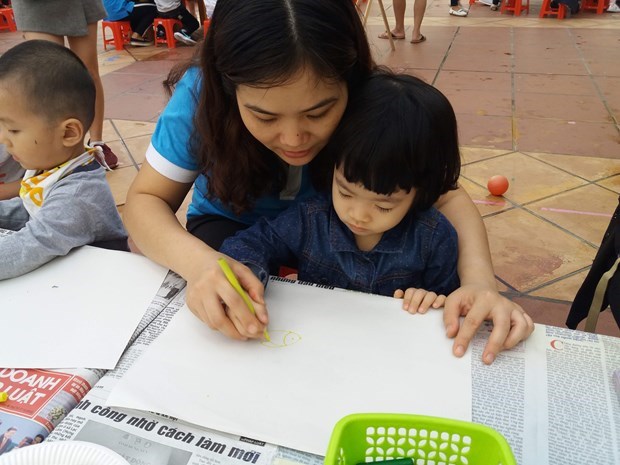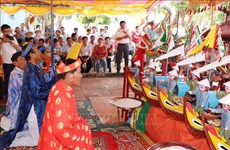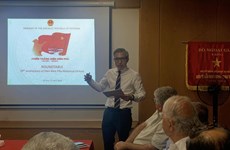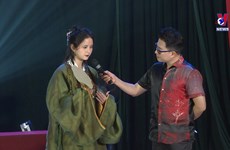Education and training rushes for renovations
 Illustrative image (Source: Vietnam +)
Illustrative image (Source: Vietnam +)
Hanoi (VNA) - In late 2018, the Ministry of Education and Training issued a new general educational curriculum which will be applied since the 2020-2021 school year at primary level.
Hence, the education and training sector must have a busy year to make completion for the new curriculum.
Story 1: New points of general education following 2019
Professor Nguyen Minh Thuyet said the new general education curriculum inherits the current one and is supplemented with new points from educational goal to subjects and study time.
Educational orientation change
According to experts, the current general education curriculum mainly focuses on the content. Accordingly, knowledge plays as both input and output of education, and it means that students have to learn by heart meanwhile their capability of pragmatism is contained.
Professor Nguyen Minh Thuyet maintains that the new general education curriculum is formed on the basis of learners’ capabilities and virtues. Education is not knowledge imparting, but helping learners be capable of dealing with problems in studying and real life thanks to its pragmatic function. The capabilities and virtues had been defined in detail and were firstly designated in the education and training sector’s future project.
 Professor Nguyen Minh Thuyet (Source: Vietnam Plus)
Professor Nguyen Minh Thuyet (Source: Vietnam Plus)They include five major virtues (patriotism, humanity, studiousness, honesty and responsibility) and ten core capabilities comprising three general capabilities (self-reliance and self-studying, communications and affiliation, problem solving capacity and creativeness), and seven specific capabilities regarding languages, calculation, natural and social understandings, technology, informatics, artistic, an physical. These specific capabilities are formed mainly through concrete subjects and activities and detailised in a different way at each level.
To ensure the synchronousness meeting this target, the new general education curriculum is built in a completely different way. It is the first time the Ministry and Education and Training has built an overall curriculum before curricula for each subject and grade.
 Learner-centred method will be applied (Source: Vietnam Plus)
Learner-centred method will be applied (Source: Vietnam Plus)
Elimination of academic content
In accordance with the new goal, general education will have a completely new face, from system restructuring to content, methodology.
In terms of system restructuring, general education is divided into two phases. Basic education will be concluded in grade 9 instead of grade 12. High-school education (three years) will see renovations focusing on occupation orientation.
Accordingly, there are five obligatory subjects instead of 13 in conjunction with optional ones. Obligatory subjects include Maths, Literature, Foreign Languages, Physical Education, Defence-Security Education. Optional subjects tend to help students orient future occupation, divided into three categories. They are social science including History, Geography, Economic and Law Education; natural science comprising Physics, Chemistry, Biology; technology and arts consisting of Technology, Informatics, and Fine Arts.
In regard to content, with the aim of pragmatic application, unnecessary academic contents will be eliminated. Instead, new subjects such as out-door activities will be supplemented for all three levels, Informatics and Technology will be added for primary level, Music and Fine Arts for secondary level.
Education curriculum bears an open and flexible approach with optional education, integrated education and localised education curricula. Even, schools, teachers and students can all make their decisions to select suitable materials by themselves. Instead of the current only textbook set, the new curriculum allows organisations and individual’s participation in compiling various textbooks available to teachers and learners.
The new teaching method is also different from the traditional one where the teacher only teaches and students only listen. In accordance with the new curriculum, teachers play as persons who stir up issues and learners are placed at centre to discover the lesson’s significance by themselves.
With positive changes, the new curriculum is anticipated to meet requirements for education of Vietnamese people of self-reliance, dynamism, creativeness and integration./.













